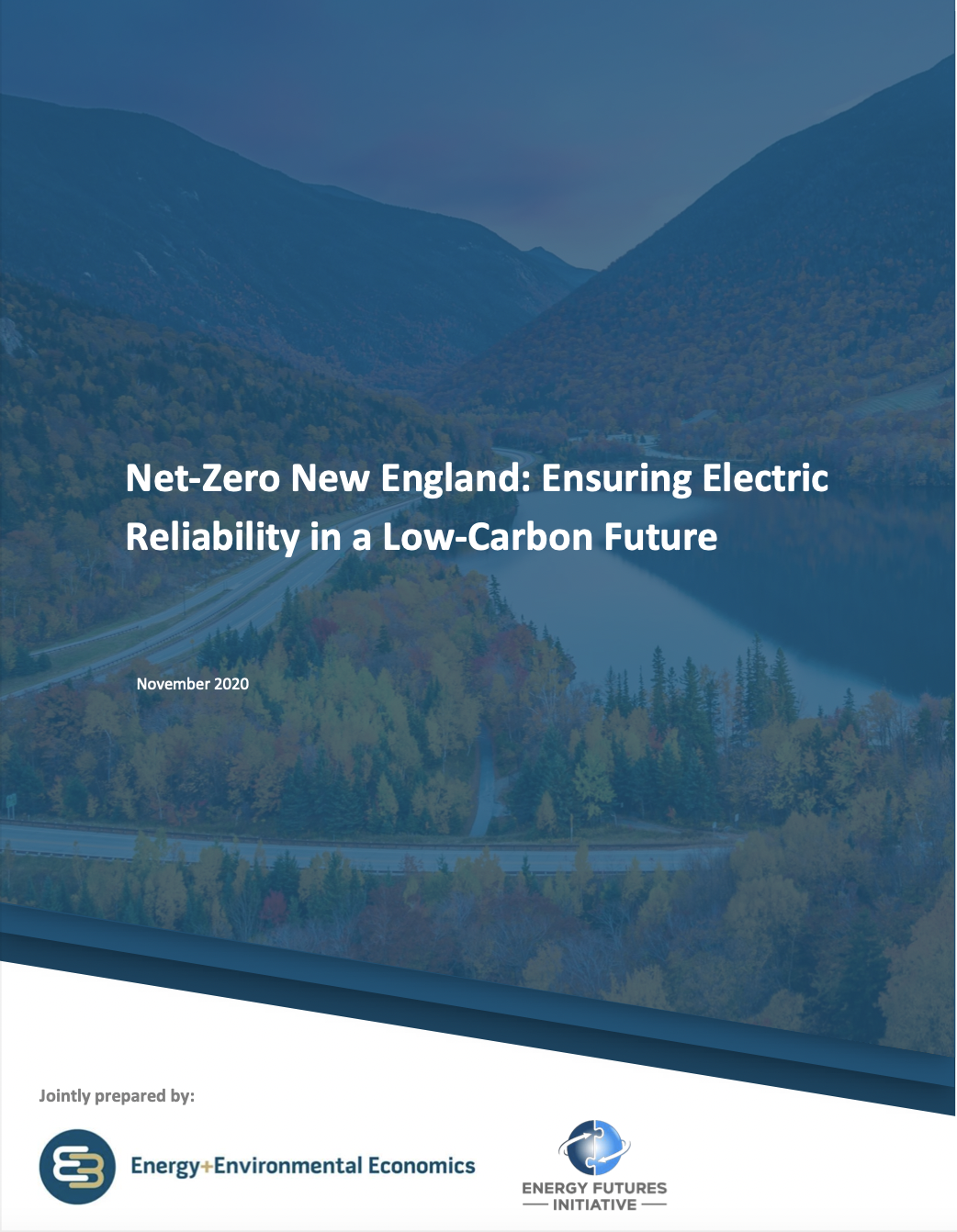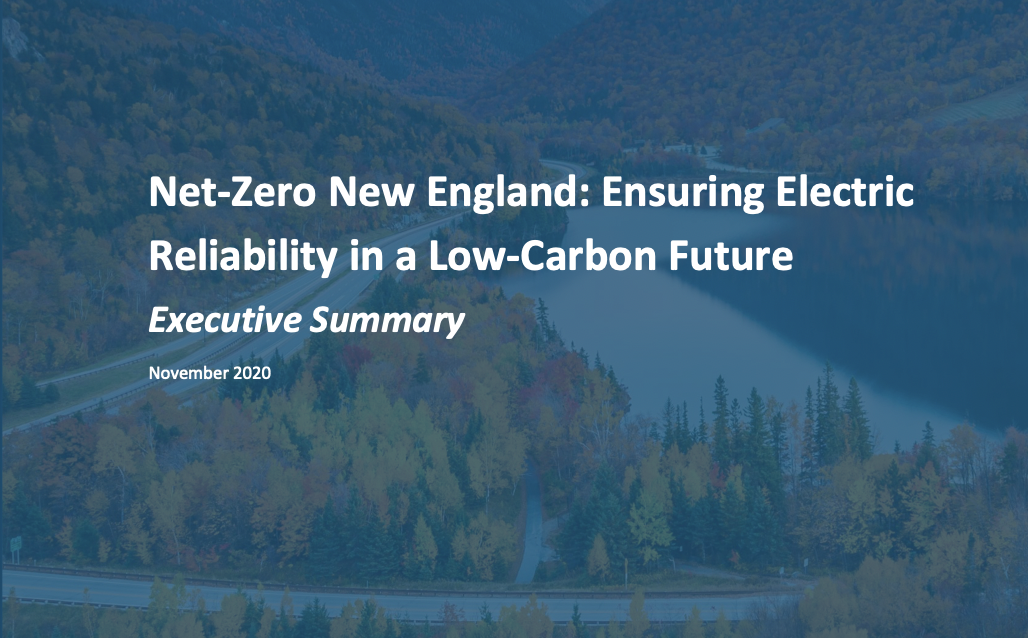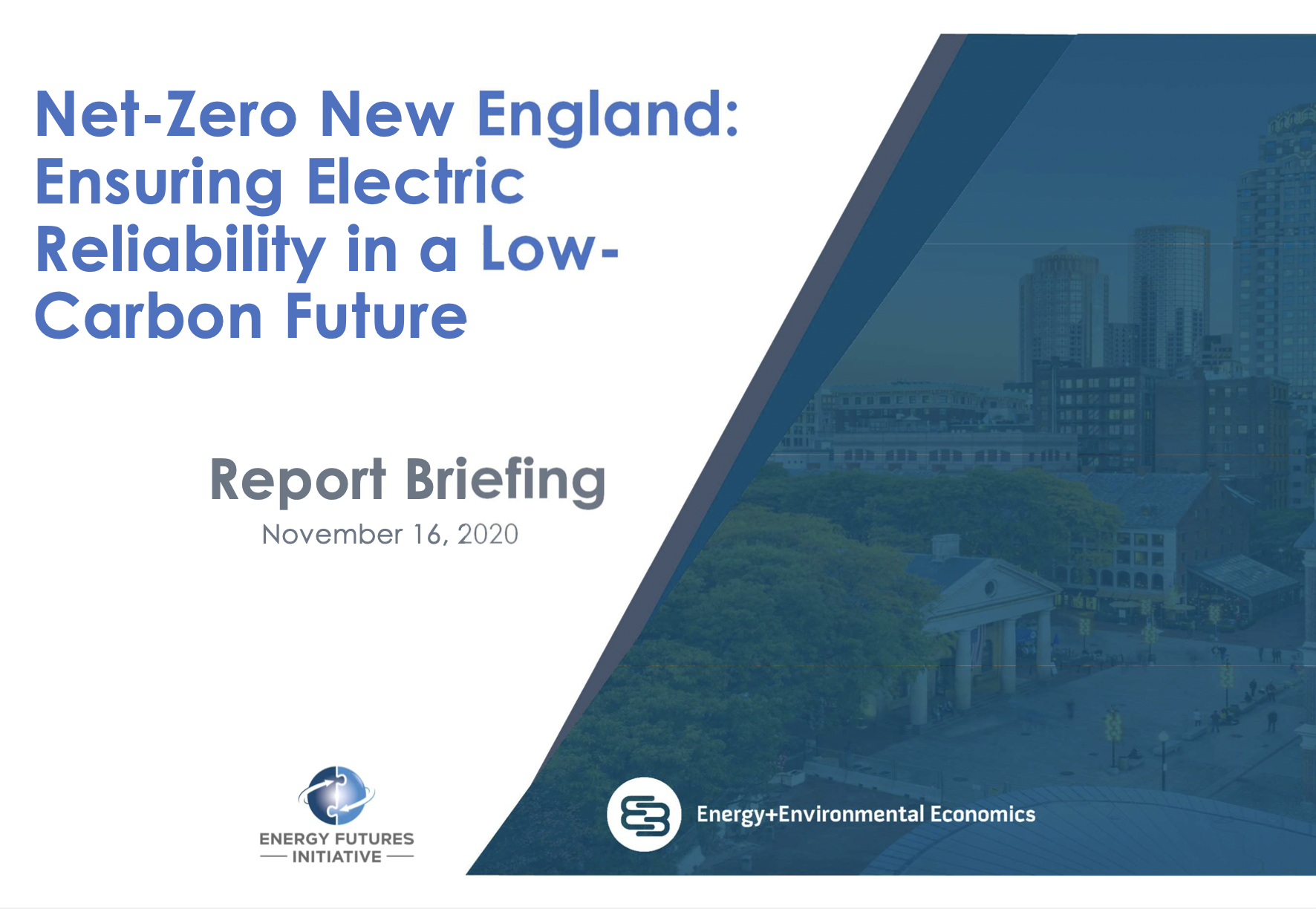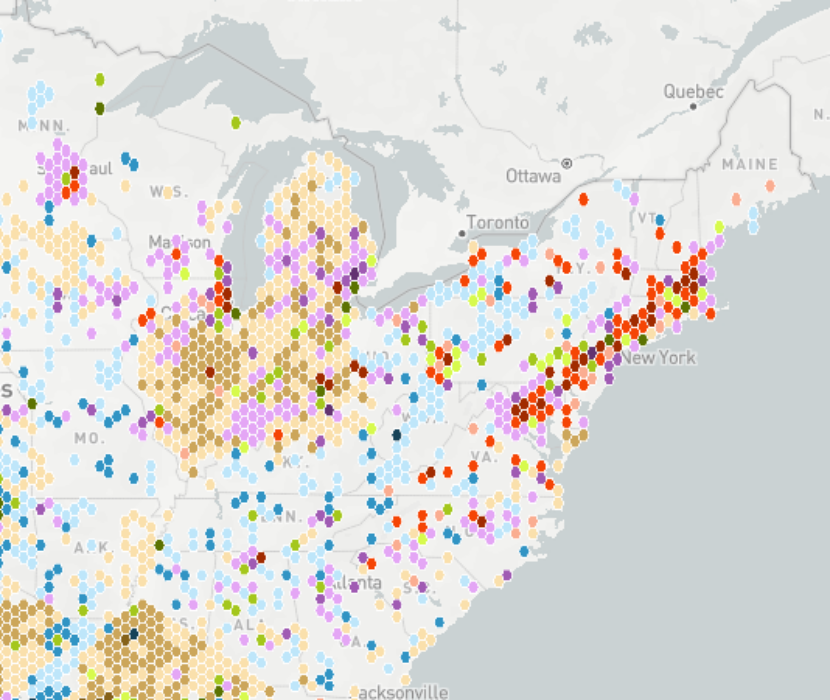Produced jointly by the Energy Futures Initiative (EFI) and Energy and Environmental Economics (E3), Net-Zero New England: Ensuring Electric Reliability in a Low-Carbon Future (November 2020) examines what is required to maintain electricity reliability in the context of reducing economy-wide emissions to net-zero by midcentury. All six New England states have committed to economy-wide greenhouse gas reductions, and the electricity system will play a key role in meeting these targets.
These states face the dual challenge of growing electricity demand—increasingly characterized by peak winter heating demand—and reducing emissions to nearly zero. This study shows that cost-effectively meeting this dual challenge will involve the addition of large amounts of wind, solar, and battery storage resources, complemented by firm capacity (such as natural gas power plants, nuclear, hydrogen generation, or other yet-to-be commercialized options such as long-duration storage) to provide generation during extended periods of low wind and solar availability. Achieving carbon goals with natural gas generation will require operating natural gas power plants at suitably low capacity factors, capturing their emissions, and/or utilizing low/zero-carbon fuels such as hydrogen.
This report produced several key findings:
- Decarbonizing New England requires transformational change in all energy end-use sectors. Key strategies are aggressive deployment of energy efficiency; widespread electrification of end uses in the building, transportation, and industrial sectors; development of low-carbon fuels, and deep decarbonization of electricity supplies.
- Electricity demand will increase significantly in New England over the next three decades under the net-zero scenarios studied. This growth is due to electrification of transportation, buildings, and industrial end uses that currently rely on fossil fuels.
- Renewable electricity generation will play a major role in providing zero-carbon energy to the region. The base case scenarios select a diverse mix, including land-based solar and wind, offshore wind, and distributed solar, along with Canadian hydropower.
- A cost-effective, reliable, and decarbonized grid requires firm generating capacity. Firm capacity is the ability to produce electricity on demand and operate indefinitely; natural gas and nuclear generation are the region’s primary sources of firm capacity.
- A broader range of technology choices lowers costs and technology risks. The availability of low-carbon firm generation technologies—such as advanced nuclear or natural gas with carbon capture and storage—could provide significant cost savings and reduce the pressure of renewable development.
- Achieving net-zero GHGs requires carbon dioxide removal (CDR), and New England’s extensive stock of healthy forest management expertise provide an ideal local opportunity for CDR. While CDR alone will not be enough to achieve economy-wide decarbonization or meet the region’s policy targets, it supports achieving full carbon neutrality.
- Achieving the commercialization of emerging technologies can be aided by leveraging regional innovation capacity. Advanced nuclear, long-duration storage, and renewable fuels are innovation areas that have tremendous regional potential.
At the launch of this report, EFI hosted a report briefing with Liz Mettetal and Arne Olson from E3. The report received coverage in S&P Global and RTO Insider and was featured in an op-ed in the Boston Globe by Ernest Moniz. It has also been featured on the websites of E3, the American Public Power Association, and the Clean Air Task Force.
Report Briefing
Supplemental Material
(Share this post with others.)







